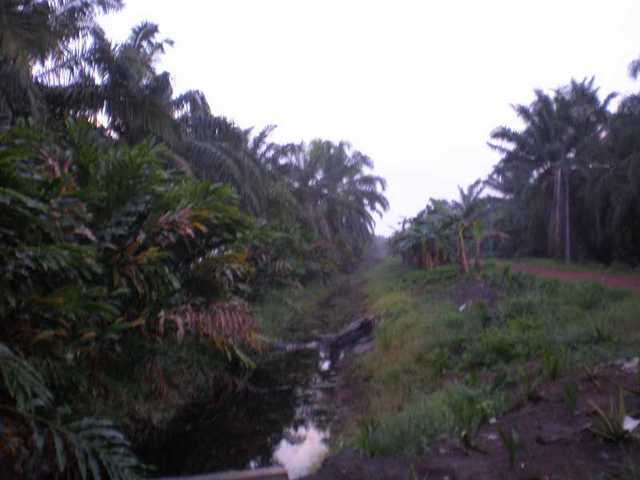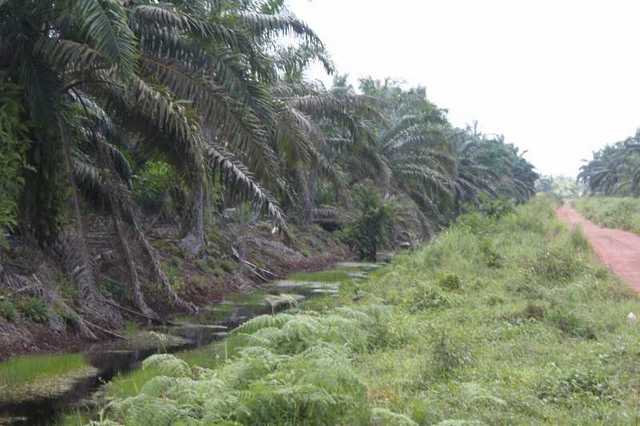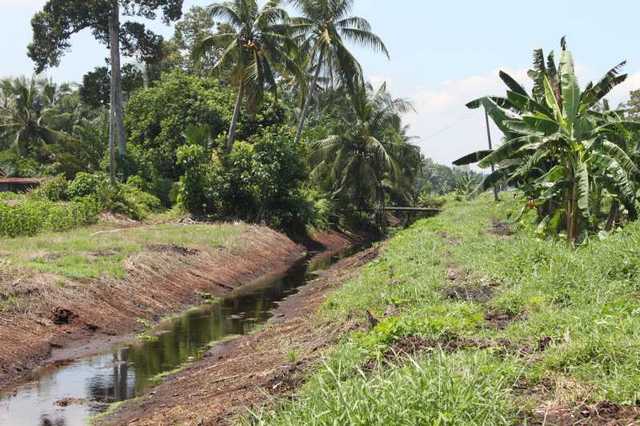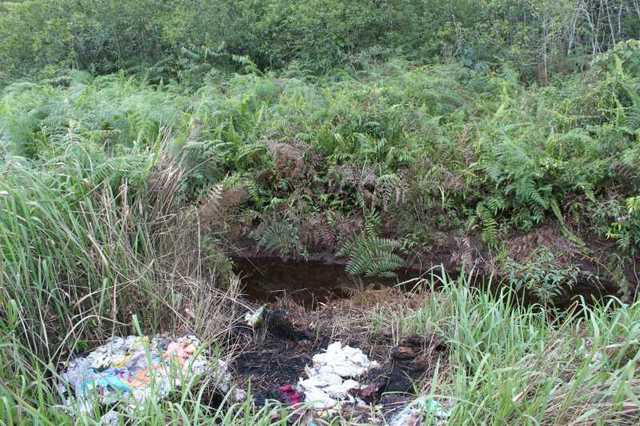The survival of the Licorice gourami is not secure
Today the existence of all fish within this genuss is highly endangered, due to the rapid destruction of primary rainforest in south-east Asia. The reason for this destruction lies in the intention of governments in Malaysia and Indonesia to turn apparently useless land into economically usable areas. This especially concerns the establishment of extensive plantations for palm oil production and the aim to draw profit from the export sales of valuable tropical timber. This leads to a demand for, and use of, large areas, caused by the profit interests of national and international companies. Besides this, there are national attempts to get hold of further areas for general agricultural use. Despite widespread international criticism today, this happens more and more in land-intensive tropical timber plantations. Above all the demand for land to extend the still-growing palm oil plantations is the decisive factor for the forest destruction and thus for the threat towards the affected flora and fauna. In at least one case (P. alfredi) mining operations are also to be named as a threat-factor.
The long-term perspective, especially for agricultural use. is that tropical soil is very poor. Without massive artificial fertilisation, for which no money is available in these regions, such former forest soils are useable for agriculture for only a few years. Nevertheless, western producers of fertilisers will try to sell their products in Malaysia and Indonesia and it is to criticise that parts of the financial resources of these countries is spent on that. Applying these techniques to the, originally oligothrophic (nutritient-poor) soils of these regions, starts the fatal process of eutrophication (i.e. enrichment and/or pollution of soils and waters by nutrients) , which has already largely progressed in industrial countries and till now has not been reversed. Via eutrophic and hypertrophic soils the excess nutrients also enter the groundwater and cause the start of an ecological disaster.
Regarding the threat to them, it is not possible to differentiate between Licorice Gourami species: all are highly endangered. Even more so, as most of the species and forms exist within limited, pockets of habitat, usually without connection to other water systems. Here the various local forms and subspecies have developed, many, still unknown to us. Generally the adaptability of these fish to man-made waters (drainage channels, roadside ditches, possibly even ponds) is low, but may exist in some of the species. Therefore, we may find them at least for a short time in such structures. Only the species P. paludicola, living in the far north of western Malaysia and the southernmost region of Thailand, seems to be more adaptable in this respect, as its ties to extreme black water habitats are less close as they live in the paper bark (Melaleuca) forests which are not quite so acid. Nevertheless these habitats are equally threatened by development.
Nature protection in Malaysia and Indonesia has the greatest importance for the preservation of the rich biodiversity of these countries, but unfortunately within the bounds of practical politics it does not have the significance it deserves. International nature protection organisations try to raise funds in order to buy land and to save it from destruction. In this context animals like the Orang-Utang act as symbols for these efforts. The natural habitats of licorice gouramis may be co-incidentally involved, but for the largest part these efforts concern drier and more elevated landscapes in the interior of the country.
The indiginous population is still attracted by the promises of wealth and employment opportunities given by the large companies, which destroy their native country – even though this perspective is offered only for a few people. More and more it is realised that the assumed better future is in fact worse. In some places the courts are already called upon, as local people start to defend themselves and their environment. However there still is a long way to go to to establish effective preservation of nature and landscape. Taking a realistic view, we have to be afraid of further losses. Most of the licorice gouramis will be be among the first victims.
(PF) (DA)





